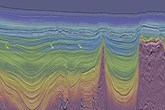EIA: US natural gas-directed rigs decreased for second consecutive year in 2024
Published by Alfred Hamer,
Editorial Assistant
Oilfield Technology,
According to the US Energy Information Administration (EIA), the number of rigs deployed to drill for natural gas in the United States decreased over the last two years. US natural gas-directed rigs decreased 32% (50 rigs) between December 2022 and December 2024. This decline has been concentrated in the natural gas-rich Haynesville and Appalachia regions, where the combined natural gas rig count declined by 34% during 2023 (43 rigs) and by 24% during 2024 (21 rigs).
The decline in drilling rigs coincides with record-low natural gas prices for most of 2024 and the wider adoption of advanced drilling and completion technologies.
In the Haynesville region, which spans Texas and Louisiana, drilling costs tend to be higher than in other plays because Haynesville wells are drilled to greater depths, usually between 10 500 ft and 13 500 ft deep. As natural gas prices have generally declined over the last two years, rigs in the Haynesville have decreased 55% since December 2022 (39 rigs) as drilling has become less economical. Consequently, marketed natural gas production in the Haynesville region has declined 7% over the same period.
Similarly in the Appalachia region, which includes natural gas produced from the Marcellus and Utica plays, rigs have declined 37% since December 2022 (19 rigs) with the drop in natural gas prices. As a result, growth in marketed natural gas production has been limited to 4% over the same period.
The extent to which producers respond to price changes depends on several factors, such as uncertainty around future prices, contracts, volatility in the market, and price hedging; current costs of materials, equipment, and labour; and availability of transportation and storage.
After the US benchmark Henry Hub natural gas price reached a 14-year high of US$6.95/million Btu in 2022, it fell 62% in 2023 (US$4.31/million Btu) and a further 16% in 2024 (US$0.43/million Btu). The Henry Hub price in 2024 was the lowest ever reported after adjusting for inflation, with March 2024 marking the lowest average price of US$1.51/million Btu.
Producers in natural gas-rich regions have responded to these persistently low prices by drilling less – as reflected in the declining rig counts – and even by curtailing production, which has grown inventories of drilled but uncompleted wells. If natural gas demand and prices continue to rise, producers could be in a better economic position to complete these wells, potentially allowing them to quickly increase production.
Read the latest issue of Oilfield Technology magazine for upstream news, project stories, industry insight and technical articles.
Oilfield Technology’s January/February 2025 issue
The January/February 2025 issue of Oilfield Technology includes keynote articles on enhancing offshore safety and risk management; technical articles on digital technology, drilling, EOR, and flow control. We also cover predictive maintenance, and production monitoring.
Read the article online at: https://www.oilfieldtechnology.com/drilling-and-production/06032025/us-natural-gas-directed-rigs-decreased-for-second-consecutive-year-in-2024/
You might also like
Viridien completes reimaging of BM-S-2 multi-client survey in Brazil’s southern Santos Basin
Viridien successfully completes BM-S-2 seismic reimaging project in the southern Santos Basin.

